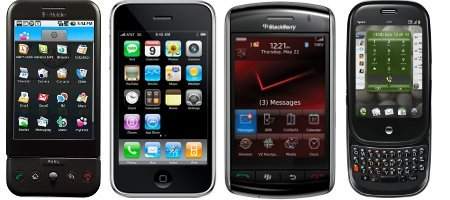Wireless communication has shifted over the years, from widespread radio access to limited range WiFi and cell coverage.
For example, when someone carrying a mobile phone moves between networks, a “handoff” is performed – meaning, one drops and another picks up the signal.
Clearly these handoffs aren’t always smooth, as mobile phones go in and out of service all the time.

At the Eighth Usenix Symposium at MIT in Boston, researchers presented a new set of communication protocols that may just improve mobile handoffs and network throughput by approximately 50 percent.
The MIT researchers responsible for the advancement based their idea on the ubiquity of smartphones with GPS, accelerometers, and increasingly, gyros.
Using motion detection, the researchers managed to improve four distinct communications protocols.
“Let’s say you get off at the train station and start walking toward your office,” explained Professor Hari Balakrishnan.
“What happens today is that your phone immediately connects to the Wi-Fi access point with the strongest signal. But by the time it’s finished doing that, you’ve walked on, so the best access point has changed. And that keeps happening.”
According to Balakrishnan, the new protocols select an access point based on the user’s inferred trajectory.
“We connect you off the bat to an access point that has this trade-off between how long you’re likely to be connected to it and the throughput you’re going to get,” he said.
Researchers found that with one version of their protocol, a moving cell phone would have to switch transmitters 40 percent less frequently, which resulted in fewer dead service spots.
Another protocol developed defines bit rate, the rate at which a phone sends and receives information. Bit rate is dependent on the bandwidth available, so if for example too much information is sent or received over a weak connection, a mobile phone might completely lose its signal. Keeping the bit rate too long means the phone would not be sending and receiving data at full capacity.
As a device is in motion, it goes in and out of bandwidth areas, so setting a protocol is quite difficult. Using the protocol developed by MIT, the phone knows when it’s in motion and chooses a bit rate more carefully. The result? A bit rate selection with around consistently around 50 percent improved throughput.
A third protocol defines the behavior of the wireless base stations rather than the device that connect to them. A base station typically knows a device has broken contact after a certain time of silence. That means the base station may continue to send data even without a proper connection, which results in wasted time and power. With information about the phone’s trajectory, the base station can predict when it will lose contact.
The fourth protocol uses motion to determine routing procedures for networks or wirelessly connect cars.
“If you asked me which problems in the paper were the ones where I saw the shortest-term benefit to lots of users,” opined Brad Karp, head of the Networks Research Group at University College London’s Computer Science Department, “it’s the automatic bit rate adaptation and, as a second choice, access point selection.”
What makes the protocols especially viable is that they’re based on hardware that comes standard in most smartphones. The downside, Kerp says, is that most of the protocols need more intrusive modification of existing networking infrastructure.
“What we are really hoping is that this opens up a really exciting direction for work in the community,” said Balakrishnan. “Other people will come up with more creative ideas, now that you know that you can get these sensor hints in a fairly robust way.”






